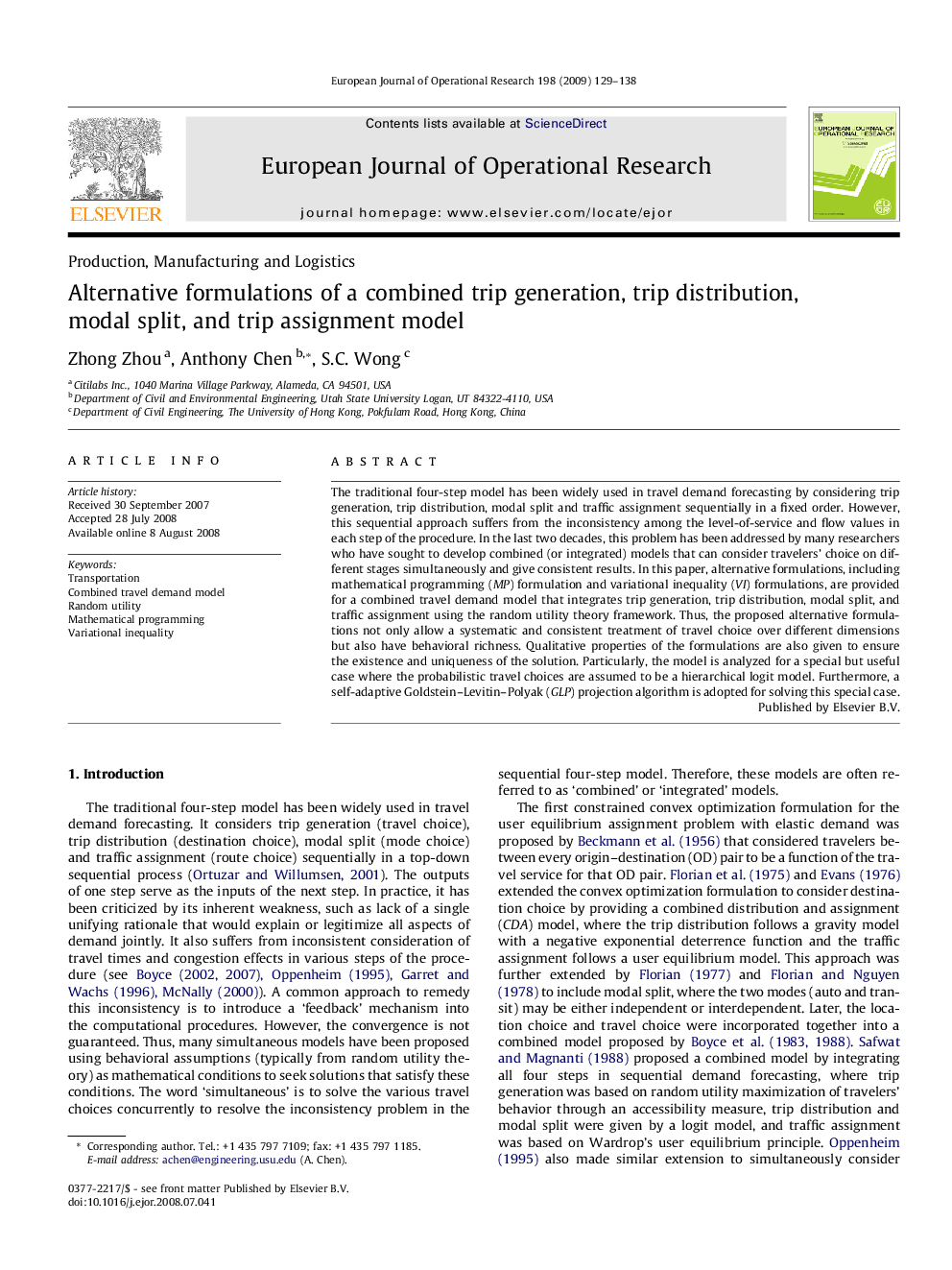| Article ID | Journal | Published Year | Pages | File Type |
|---|---|---|---|---|
| 482513 | European Journal of Operational Research | 2009 | 10 Pages |
The traditional four-step model has been widely used in travel demand forecasting by considering trip generation, trip distribution, modal split and traffic assignment sequentially in a fixed order. However, this sequential approach suffers from the inconsistency among the level-of-service and flow values in each step of the procedure. In the last two decades, this problem has been addressed by many researchers who have sought to develop combined (or integrated) models that can consider travelers’ choice on different stages simultaneously and give consistent results. In this paper, alternative formulations, including mathematical programming (MP) formulation and variational inequality (VI) formulations, are provided for a combined travel demand model that integrates trip generation, trip distribution, modal split, and traffic assignment using the random utility theory framework. Thus, the proposed alternative formulations not only allow a systematic and consistent treatment of travel choice over different dimensions but also have behavioral richness. Qualitative properties of the formulations are also given to ensure the existence and uniqueness of the solution. Particularly, the model is analyzed for a special but useful case where the probabilistic travel choices are assumed to be a hierarchical logit model. Furthermore, a self-adaptive Goldstein–Levitin–Polyak (GLP) projection algorithm is adopted for solving this special case.
